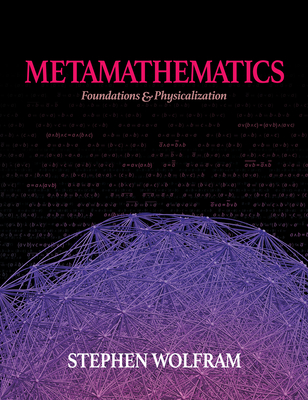


Nobody expected this--not even its creators: ChatGPT has burst onto the scene as an AI capable of writing at a convincingly human level. But how does it really work? What's going on inside its AI mind? In this short book, prominent scientist and computation pioneer Stephen Wolfram provides a readable and engaging explanation that draws on his decades-long unique experience at the frontiers of science and technology. Find out how the success of ChatGPT brings together the latest neural net technology with foundational questions about language and human thought posed by Aristotle more than two thousand years ago.






Introduction to Calculus provides a comprehensive introduction to fundamental concepts in calculus and their applications, covering all of Calculus 1 and some of Calculus 2. The book starts with functions and limits, followed by differential calculus, and then moves on to integral calculus and a brief discussion of differential equations. It ends with the complete solution for a sample exam based on the AP Calculus AB course. Students can access a free, interactive ebook version of the text using a URL provided inside the print version. Further supplemental materials, including videos, practice problems, exercises and quizzes, are available online in the companion Wolfram U course.






So goes the legend of the tricky knot of Gordius, king of Phrygia.Many had tried; many had failed, but Alexander the Great simplycut the knot with his sword. He went on to conquer most of Asia, eventually reaching as far east as Northern India.
Cut the Knot is a book of probability riddles curated to challenge the mind andexpand mathematical and logical thinking skills. First housed on cut-the-knot.org, these puzzles and their solutions represent the efforts of great minds around theworld. Follow along as Alexander Bogomolny presents these selected riddles bytopical progression. Try them for yourself before reading their solutions. Just like itwas for Alexander the Great, the non-trivial, unexpected solution might be exactlythe one you need.

Machine learning-a computer's ability to learn-is transforming our world: it is used to understand images, process text, make predictions by analyzing large amounts of data, and much more. It can be used in nearly every industry to improve efficiency and help stakeholders make better decisions. Whatever your industry or hobby, chances are that these modern artificial intelligence methods will be useful to you as well.
Introduction to Machine Learning weaves reproducible coding examples into explanatory text to show what machine learning is, how it can be applied, and how it works. Perfect for anyone new to the world of AI or those looking to further their understanding, the text begins with a brief introduction to the Wolfram Language, the programming language used for the examples throughout the book. From there, readers are introduced to key concepts before exploring common methods and paradigms such as classification, regression, clustering, and deep learning. The math content is kept to a minimum to focus on what matters-applying the concepts in useful contexts. This book is sure to benefit anyone curious about the fascinating field of machine learning.



Introduction to Statistics with the Wolfram Language applies the extensive computational power of the Wolfram Language to the field of statistics. Starting from the basics and working through a range of foundational concepts, Klopper shows just how accessible computational statistics can
be given the appropriate tool set. Topics include descriptive statistics, distributions, hypothesis testing, parametric testing, correlation and much more. Follow along as Klopper offers step-by-step instructions and relevant exercises from the field of medical statistics designed to teach readers how to understand and present data in today's increasingly data-driven world.
The Wolfram Language represents a major advance in programming languages that makes leading edge computation accessible to everyone. Unique in its approach of having vast built-in knowledge and automation, the Wolfram Language scales from a single line of easy-to-understand interactive code to million-line production systems. wolfram.com/language
Explore the author's Wolfram Notebooks and look for updates in Coursera and Wolfram U for use with this book wolfr.am/klopper
Wolfram Notebooks are viewable for free with Wolfram Player. wolfram.com/player

Total eclipses of the Sun are rare and dramatic--and on April 8, 2024, one will cross the US. But when exactly will it happen? In this short but richly illustrated book, prominent scientist and computation pioneer Stephen Wolfram tells the triumphant and hard-won story--spanning more than two thousand years--of how science, mathematics and computation have brought us to the point where we can now predict the time of the eclipse to within one second. Learn how the problem of eclipses brought us some of the earliest exact science, the first known computer, contributions from many of the all-time greats of mathematics and physics, and critical technology for the space program. See how all this provides a clear, modern understanding of a phenomenon that has surprised and amazed throughout human history.


Each year, the Wolfram Summer School brings together undergraduate and graduate students, postdoctoral scholars, professors and professionals to develop computational research projects using Wolfram Language. This curated collection of student projects from the 2023 Summer School covers various disciplines, including data science, physics, artificial intelligence, social sciences, computational biology, finance and more.
Participants present their methodologies and findings through detailed reports, illustrating how computational tools can advance research across disciplines. These proceedings provide concrete examples of Wolfram technology applications for researchers, educators and practitioners in a wide range of fields.